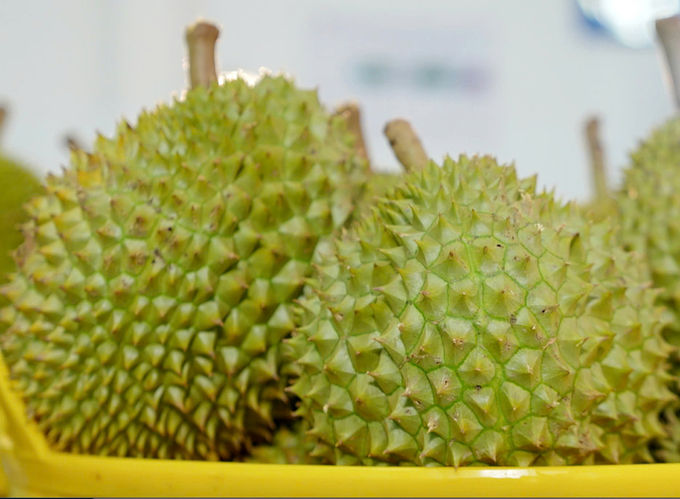December 3, 2025 | 09:44 GMT +7
December 3, 2025 | 09:44 GMT +7
Hotline: 0913.378.918
December 3, 2025 | 09:44 GMT +7
Hotline: 0913.378.918

Beijing residents show great interest in fresh Vietnamese coconuts. Photo: Nguyen Thuy.
According to Nguyen Thanh Binh, Chairman of the Vietnam Fruits and Vegetables Association (Vinafruit), the northern region of China is a very large market in which Vietnamese fruits can find great potential. In order to bring Vietnamese fruits deep into the Chinese mainland, it is necessary to first reorganize the fruit industry towards large-scale production, concentrated production and create high-quality products that are safe for consumers and meet the regulations of the Chinese market.
Good preservation technology is needed to maintain the quality of fruits after a long period of transportation. This also raises the issue of investment in the path of developing the most suitable methods and means of transportation for fruit export. The ultimate goal is to bring Vietnamese fruits to Beijing, the northern provinces and areas deep in mainland China in the fastest time possible.
The fruit and vegetable processing industry should be further promoted to create more diverse products that suit consumer tastes, thereby providing consumers in Beijing and inland areas of China with more choices of Vietnamese fruits. Processed fruits with long shelf life are also a way to transport deeper into the Chinese market, including the northern provinces.

Durian - the number one exported fruit by Vietnam at present. Photo: Nguyen Thuy.
“Businesses themselves need to improve their ability to supply fruit and meet market demand. In general, Vietnamese people still prefer to sell fruit on the spot when customers have a need. They sell but do not build the habit or have the initiative to bring the goods to large markets, distribution centers, and modern consumption systems,” said Chairman Nguyen Thanh Binh.
With the goal of bringing Vietnamese fruits deeper into the Chinese market, businesses need to change their mindset and their methods in order to better meet the fruit demand in China. Those who want to acquire more customers should proactively go to large wholesale markets in more distant areas.
Accompanying businesses in bringing Vietnamese fruits deeper into the Chinese market, Vinafruit will review, arrange, and reorganize activities in the near future. The goals are to enhance the connectivity between businesses, bring Vietnamese fruits to new regions and markets, and seize new market opportunities. Vinafruit will support the cooperation of businesses, thereby protecting the involved interests.
“As for the relevant ministries and branches, with the Protocols signed with China, it is necessary to continue negotiating so that China can issue additional growing area codes and packing facility codes to increase the area and output of Vietnamese fruits exported to China. At the same time, it is necessary to continue promoting negotiations on new Protocols to have more Vietnamese fruits exported to China, especially fruits with great export potential such as grapefruit, custard apple, avocado, etc,” said Chairman Binh.
Translated by Samuel Pham

(VAN) Despite numerous challenges, Vietnam's key seafood products are maintaining strong momentum, setting the stage for full-year exports to potentially reach USD 11 billion.

(VAN) The signing of a protocol between Viet Nam and China on the export of fresh jackfruit represents a significant milestone in agricultural trade cooperation between the two countries.

(VAN) On November 27, the Ninh Binh Department of Agriculture and Environment and the Institute for Green Growth Research organized a training course on greenhouse gas inventory for businesses.

(VAN) China’s cooking oil is suddenly flooding into India. It all comes down to a soybean surplus that Beijing doesn’t quite know what to do with.

(VAN) An Giang promotes supply-demand connections, standardizes quality and builds value chains, creating a foundation for sustainable bird’s nest development and aiming to expand exports.
/2025/11/24/5339-4-nongnghiep-075331.jpg)
(VAN) Recently, the conference on 'Sustainable Fisheries Linkage Chain - Tilapia for Export' took place in Tien Hai commune, Hung Yen province.
/2025/11/21/4309-2-153400_128.jpg)
(VAN) Green and low-emission rice is paving the way for Vietnamese rice to enter high-end markets, marking the beginning of a transformation journey toward greening and elevating the national rice brand.